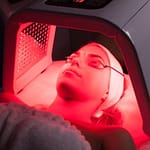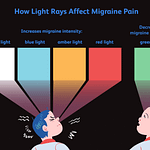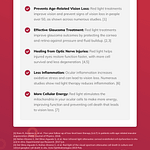Light therapy is an alternative method of healing that utilizes light to address various health conditions. It may involve fluorescent lights, halogen lights or sunlight.
Light therapy may also be employed to treat certain cancers and jaundice in newborn babies. Treatments involve using special light bulbs, biliblankets or other devices that shine blue light onto the baby’s body.
Does it work for depression?
Light therapy, also known as bright light therapy, utilizes a light box to help treat depression and other mood problems. The treatment has proven successful for many people with milder sym
ptoms; it can be combined with other treatments or used alone for maximum effect.
Seasonal affective disorder (SAD), a type of depression that occurs when people don’t get enough exposure to sunlight, is commonly prescribed. But it can also be beneficial for other forms of depression and sleep disorders.
If you’re suffering from SAD or any form of depression, it’s wise to speak with your doctor or therapist about whether light therapy is suitable for you. It can be a safe and effective way to reduce symptoms, enhance quality of life, and boost energy levels.
According to researchers at the University of Washington, using a light box can be just as beneficial as going to therapy or getting antidepressant medication. A study found that people who combined light therapy with fluoxetine, an antidepressant drug, experienced better remission rates than those taking just the medication or who didn’t use any treatment at all.
Light therapy is the most successful type of light therapy. These devices emit low lux (illuminance), then gradually increase intensity over time. They can last anywhere from 20 minutes to three hours and should be used once or more daily until you feel better.
Try to utilize a light box daily in the morning, when your body is most likely to respond well. Additionally, getting out in the sun for some time each day – even on cloudy or ov
ercast days – is beneficial.
Other light therapies, such as red light therapy and green light therapy, may also be effective for treating depression. For instance, red light’s average 700 nm wavelength penetrates deep into cells to boost mitochondria – energy production centers within cells – for improved energy production.
While research is still being done into how red light and green light therapies work to combat depression, their benefits include boosting your immune system and preventing inflammation that can cause stress, anxiety, and depressive symptoms. Furthermore, red light stimulates collagen production in the skin which could prevent premature aging as well as improve hair and scalp health.

Does it work for anxiety?
Anxiety and depression can often be traced back to neurotransmitter imbalances, but light therapy can help restore certain brain chemicals such as serotonin, dopamine and noradrenaline levels.
Red and infrared lights have the potential to reduce inflammation in the brain, which is often the source of anxiety disorders. Furthermore, these lights stimulate melatonin–the hormone responsible for sleep–and help you relax.
Light therapy has varying effects on different people, but is generally safe and without side effects. However, if you experience any symptoms that could indicate an allergic reaction or other medical issue, it’s best to speak with your doctor immediately.
One study discovered that people with low-level anxiety could reduce their levels of fear after exposure to bright light. These results are remarkable, as they suggest that acute exposure to light may have an anxiolytic effect on less anxious adults.
This study also demonstrated that the anxiolytic effects of bright light were independent of baseline levels of anxiety or depression. This suggests that these effects may be more widespread than previously believed.
Another study demonstrated that light therapy can alleviate symptoms of seasonal affective disorder (SAD). SAD occurs when a person’s circadian rhythm, or body clock, no longer aligns with seasonal changes. As such, their natural sleep-wake cycle becomes disrupted and this may lead to feelings of sadness or melancholy.
Winter can be especially challenging for people with SAD, as their circadian rhythms are disrupted by shorter daylight hours. Light therapy can help reset this balance by producing more melatonin in the body, which will in turn reduce feelings of depression.
In addition to altering your sleep-wake cycle, light therapy also increases serotonin levels and boosts energy. The higher your serotonin concentrations are, the more energized you’ll feel and better equipped to cope with stress.
Ideally, you should spend around an hour per day using the light box. You can adjust this time as needed but most people start seeing benefits after about a week. If you experience any side effects such as irritability, eyestrain, headaches or nausea when using your light box, reduce its session time or move farther away from it.
Does it work for insomnia?
Are you searching for an effective way to sleep? Light therapy could be the solution. This non-invasive therapy helps reset your circadian rhythm — the 24-hour cycle that controls everything from appetite and sleep patterns to wakefulness and alertness.
Light therapy is a type of light therapy, in which you shine a lamp or light box that emits between 2,500 and 10,000 lumens per square meter (lux), similar to natural sunlight’s brightness. Your healthcare provider can help you set the proper time and intensity for maximum benefit when using this type of therapy.
The light in the box mimics natural sunlight and can be used at specific intervals throughout the day to reset your sleep-wake cycle. This is because light plays an integral role in maintaining a healthy circadian rhythm or “body clock.”
Your circadian rhythm is determined by the signals your eyes send to your suprachiasmatic nucleus and retinohypothalamic tract about when it’s dark and when it’s light. These cues play an integral role in maintaining a healthy sleep-wake cycle, so when they are disrupted it can have detrimental effects on health and well-being – including insomnia.
Studies have demonstrated that exposure to bright light in the morning can improve sleep quality. It also increases alertness and energy levels, as well as reduce feelings of drowsiness throughout the day.
However, if you’re using a lamp or light box, it may take some time for results to appear, especially if your symptoms are severe. Start at low intensity and gradually increase it as you observe progress.
Another type of light therapy is red-light therapy, which utilizes red or infrared light to encourage your body to produce more melatonin–the naturally occurring hormone responsible for sleep and wakefulness. Unlike blue light from electronic devices which has been known to keep us up at night, red light doesn’t disrupt your circadian rhythm nor disrupt melatonin levels.
Recent meta-analysis of studies found light therapy to be effective for certain sleep disorders, including those linked to your circadian rhythm and insomnia. Nonetheless, it’s important to remember the research is mixed and there may be potential study biases at play.
Does it work for bipolar disorder?
Bipolar disorder is a mental health condition that causes episodes of elevated mood (mania or hypomania) and low mood (depression). Patients experience extreme mood swings which can have detrimental effects on their behavior and ability to think clearly. Treatment for bipolar disorder typically consists of medication as well as psychotherapy.
Studies have demonstrated how light therapy can assist those living with bipolar disorder in managing their symptoms. For instance, bright light stimulation increases production of neurotransmitters that promote positive emotions such as serotonin.
Additionally, light therapy can alter the body’s circadian rhythm to promote better sleep patterns and alleviate depression, making it a viable adjunctive treatment option for bipolar disorder.
Researchers discovered that patients treated with light therapy experienced a significant decrease in their QIDS scores and lessened likelihood of switching to manic or mixed episodes after two weeks. Furthermore, those who received light therapy reported fewer side effects than those without.
However, if you are taking antidepressants for bipolar disorder it is essential to speak with your doctor about the potential risks of using light therapy as an adjunctive treatment. It should not be substituted for prescription medication since it could interfere with their effectiveness.
One study revealed that patients with bipolar II who used light therapy for a month experienced improved moods. They reported feeling more stable, had less irritability, and had more energy levels.
A second study demonstrated that bright light therapy significantly reduced anxiety and fatigue in individuals suffering from bipolar disorder. It was also successful at lessening depressive symptoms, particularly during morning hours.
Finally, light therapy can increase cell turnover rate which is beneficial for overall health. Healthy cells improve your mood and performance on a fundamental level.
Are you searching for an effective light therapy lamp to treat your bipolar depression? Kaiyan Luminette 3 is MDA-certified and FDA-approved, making it the perfect addition to the medications prescribed to you as part of a comprehensive bipolar treatment plan.







